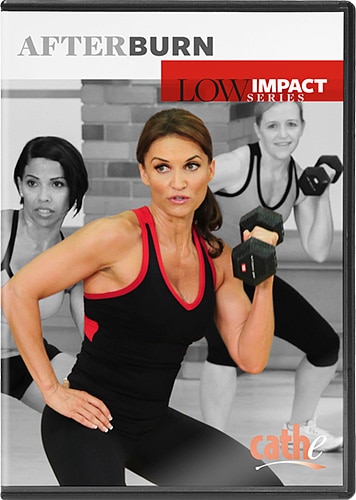
After-Burn and Oxygen Debt
When you do a more intense workout, your body incurs a greater “oxygen debt.” With high-intensity workouts, your body can’t supply oxygen to your hard-working muscles fast enough to meet the demand. As a result, cells are forced to produce ATP anaerobically. When this happens, lactate builds up and an oxygen debt is created that has to be repaid once you stop exercising. To repay this oxygen debt, oxygen consumption will be higher after a high-intensity workout.
Intense exercise also causes a greater rise in core body temperature, and your body has to work harder to lower your core temperature once you stop. In addition, the lactate that accumulated has to be metabolized, ATP has to be replenished and muscle myoglobin restored. Your heart also has to work harder and needs more oxygen. As a result, your oxygen consumption is higher and your body continues to work hard even after you’ve cooled down.
Ever wonder what factors influence EPOC and cause you to burn more calories after a workout? That’s important to know so you can “fine tune” your workouts to get more of an after-burn.
Exercise Intensity
How hard you work out is one factor that impacts the degree of EPOC or after-burn. If you exercise at a low intensity, you won’t incur a significant oxygen debt and the rise in core body temperature will be minimal. Your oxygen consumption will decrease and recovery will be complete within several minutes. This is called the fast component of the oxygen recovery curve.
When you work out at a higher intensity, the oxygen recovery curve has a fast and a slow component. After initial recovery (the fast component) in the first few minutes, there’s a slower recovery phase where oxygen consumption remains elevated for up to 24 hours afterward, depending upon the intensity of the workout. So one way to increase after-burn and burn more calories after a workout is to exercise at a higher intensity. The greater the intensity of a workout, the more pronounced the after-burn and the longer its duration.
Exercise Duration
Even though exercise intensity has the greatest impact on EPOC, how long you work out is a factor too. If you run or jog at a steady pace, you’ll experience a greater after-burn by doing it for 60 minutes as opposed to 30 minutes. So if you can’t do a high-intensity workout, another way to get the benefits of EPOC is to work out longer. Of course, you also have to take into account the negative effects of cortisol. Cortisol levels with increasing exercise duration but some of this rise can be offset by consuming enough calories and carbs so your blood sugar levels don’t drop.
Other Factors That Affect EPOC
Some research suggests that intermittent aerobic exercise stimulates a greater after-burn response than steady-state workouts even at similar exercise intensities. Doing a high-intensity interval workout is one of the best ways to maximize EPOC and burn more calories once you’ve finished your workout. In terms of resistance exercise, intensity counts here too. High-intensity resistance training using heavier weights elicit more of an after-burn effect than using lighter weights. Circuit resistance workouts also boost EPOC more than non-circuit resistance training.
Recovery is quicker and oxygen debt is repaid faster once you’ve trained for a while. That means you’ll have a more substantial after-burn when you first start working out, although even after training, long-duration and high-intensity workouts still offer significant EPOC.
The Bottom Line?
You can increase the after-burn a workout produces by changing the intensity and duration of your workout. The best way to do this is to increase the intensity through high-intensity interval training like you will find in my low impact AfterBurn DVD. To maximize the after-burn from resistance training, choose heavy weights or do circuit resistance training with little or no rest between circuits. The beauty of doing this is you’ll continue to burn calories even after you’ve recovered, sometimes for as long as 24 hours if you did a super-intense workout. High-intensity workouts promote the release of a flood of hormones like testosterone and growth hormone that increase fat-burning. Plus, they burn carbohydrates and create an oxygen debt that will cause your body to use more oxygen and burn more fat afterward.
One word of warning. Do “after-burn” workouts in moderation. Doing them daily can quickly lead to overtraining and an increased risk of injury. Done in moderation, high-intensity aerobic and resistance workouts can be your best fat-burning ally. Take advantage of them.
References:
The University of New Mexico. “Exercise After-Burn: Research Update”
Journal of Applied Physiology July 1, 1997 vol. 83 no. 1 153-159.
Sports Medicine. 33(14). 1037-1060.
Related Articles By Cathe:
Tabata Workouts: Will the Real Tabata Please Stand Up?
These Are the Two Biggest Factors that Determine How Much of an Afterburn You Get
What Types of Exercise Cause an Afterburn?
How to Increase Exercise After-Burn

